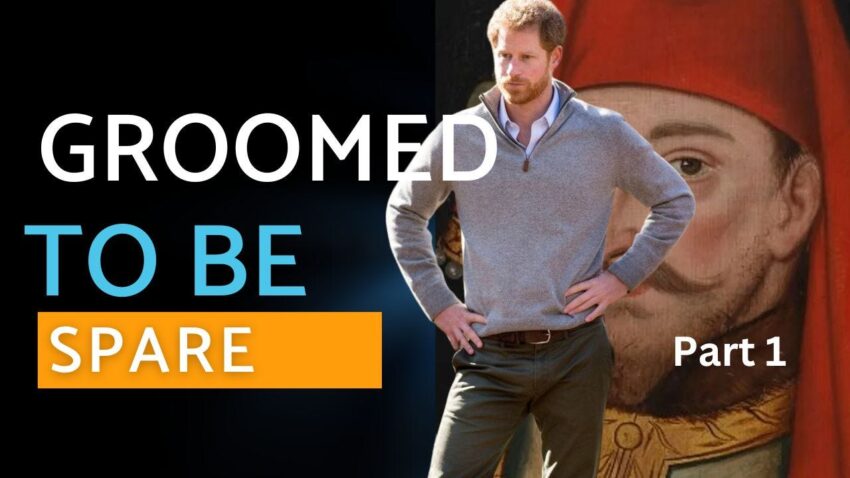When it comes to royal drama, few stories captivate the public quite like the ongoing saga between Kate Middleton and Meghan Markle.
This tale is filled with everything from alleged bullying to unspoken rivalries, making it seem like a plot straight out of a soap opera.
But what really goes on behind the palace walls?
Let’s dive into the timeline of events and sift through the facts and fables that have emerged from Kensington Palace.
Meghan Markle stepped into the royal spotlight as an American actress, bringing a fresh perspective to the British monarchy.
However, her fairy tale quickly took a turn for the worse.
Did she feel like Cinderella without her fairy godmother?
The strict rules and hidden hierarchies of palace life left her feeling overshadowed by Kate, who had already established herself within the royal family.
Was this merely a case of feeling like second fiddle, or was there more to the story?
According to royal expert Tom Quinn, Meghan and Harry resided in Nottingham Cottage, a quaint yet modest home compared to the lavish residences of Kate and William.
This smaller abode symbolized their perceived lower status within the royal hierarchy, and the stark contrast between Hollywood glamour and royal simplicity may have sown the seeds of discontent.
As tensions escalated, a pivotal incident emerged that left Kate feeling blindsided.
Reports indicate that Meghan allegedly lost her cool with Kate’s staff, demanding respect in a way that raised eyebrows.
This clash highlighted a fundamental difference in expectations: Meghan viewed herself as a princess deserving of deference, while the royal staff remained loyal to Kate.
Was this just a case of crossed wires, or did it reveal deeper frustrations simmering beneath the surface?
Kate was reportedly appalled by Meghan’s treatment of her staff, interpreting it as a serious breach of palace protocol.
Having always embraced her royal duties, Kate valued loyalty above all else, while Meghan sought acknowledgment and validation.
This fundamental clash of values undoubtedly left Kate shaken and questioning the dynamics at play.
In March 2021, the situation intensified when emails from Jason Knauf, Meghan’s former communications secretary, surfaced, accusing her of bullying palace staff.
These allegations prompted the palace to take action, launching an investigation into the claims.
Despite Meghan’s denial, the resurfacing of such accusations reopened old wounds for the royal family.
Was this an American misunderstanding of royal customs, or was there something more insidious at work?
Prince Harry found himself caught in the middle, advocating for Meghan while grappling with his royal responsibilities.
To him, Meghan was family, and he felt compelled to protect her.
However, this loyalty led some to question whether she was fit for royal life.
In an unprecedented move, Buckingham Palace released a statement addressing the bullying allegations, emphasizing their commitment to workplace dignity and promising a thorough inquiry.
Was this a direct response to Meghan, or simply a reinforcement of the palace’s values?
The entrance of Meghan into the royal fold sparked conversations about tradition versus modernity.
The concept of knowing one’s place may seem antiquated, yet it remains crucial in royal life.
For Meghan, whose values leaned towards self-empowerment, the palace’s customs felt stifling, creating friction within the royal family.
Are the tensions between Kate and Meghan a reflection of the challenges of merging two worlds, or do they signify a broader shift in royal values?
This unfolding drama transcends just Meghan and Kate; it encapsulates the struggle between change and tradition, highlighting the pressures royals face in balancing public and private lives.
With the world evolving rapidly, can the royal family adapt to contemporary values, or will they find themselves stuck in the past?
Public sentiment surrounding the royals often splits them into symbols of tradition and progress.
Meghan’s narrative complicates this image, leading supporters to align with either her or Kate.
This divide has sparked discussions about class, race, and gender roles within the monarchy, and social media has only amplified these debates.
The once-quiet royal family now finds itself in the spotlight, where every move is scrutinized.
For centuries, royal life has been romanticized in films and literature, but the saga of Meghan and Kate reveals a different story—one filled with immense pressure and rigid expectations.
Harry and Meghan’s experiences underscore that royalty does not shield individuals from mental health challenges.
Even Kate bears the weight of maintaining her image as the future queen.
The allegations of bullying are serious in any context, but within the palace, they become matters of national interest.
The media swiftly seized upon Knauf’s emails, raising questions about whether the palace culture allowed toxic behavior to persist unchecked.
The palace’s decision to initiate an internal investigation signals a significant shift in how the monarchy approaches contemporary issues.
The conflict between Meghan and Kate illustrates two women navigating a challenging environment.
For Meghan, standing up against tradition may have felt empowering but ultimately isolating.
Conversely, Kate’s commitment to royal values required her to balance personal beliefs with public expectations.
Each woman’s journey reflects different forms of resilience, with Meghan’s controversial departure representing self-preservation, while Kate’s quiet dedication signifies loyalty to duty.
As the royal family faces mounting pressures to evolve, the question remains: can they adapt to modern values without alienating their public?
The departure of Meghan and Harry may prompt the palace to reassess its customs, especially as the future king, Prince William, grapples with the challenges of balancing tradition with a more inclusive approach.
In the end, the saga of Kate and Meghan offers a glimpse into the complexities of royal life, illustrating that even those born into privilege face their own struggles and conflicts.
This narrative isn’t solely about two women; it reflects the broader challenge of finding common ground in an increasingly divided world.
